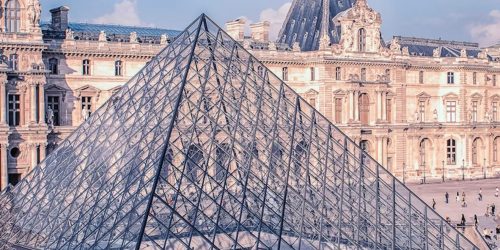Insider Tips for Navigating Paris: How to Avoid Tourist Traps
Paris, the City of Light, is a dream destination for many travelers. With its stunning architecture, world-class museums, and rich history, it’s easy to see why. However, I’ve learned that navigating the city requires more than just a good map. To truly enjoy your visit and avoid tourist traps, I’ve compiled some insider tips that will help you make the most of your time in this beautiful city.
Essential Packing Tips for Paris
1. Travel Essentials
When packing for Paris, consider the following essentials that will enhance your travel experience:
- Comfortable Walking Shoes: Paris is a city best explored on foot, and you’ll be doing a lot of walking. Choose shoes that are both stylish and comfortable to support long days of exploration.
- Lightweight Layering Clothes: The weather can be unpredictable, so pack layers that you can easily add or remove. A light jacket or cardigan is great for cooler evenings, especially in spring and fall.
- Portable Phone Charger: You’ll rely on your phone for navigation and photos, so having a portable charger will ensure you stay powered up throughout the day.
- Travel Adapter: France uses type C and E plugs, so be sure to bring a travel adapter to keep your devices charged.
- Reusable Water Bottle: Staying hydrated is key, and Paris has many public drinking fountains where you can refill your bottle for free.
2. Clothing Considerations
Parisians are known for their chic style, so you might want to pack a few stylish outfits. However, comfort is key, especially for long days of sightseeing. Aim for:
- Smart Casual Attire: Think elegant yet comfortable. A pair of well-fitted jeans, stylish tops, and a nice jacket can be perfect for dining out or visiting museums.
- Weather-Appropriate Gear: If you’re visiting in the winter, pack a warm coat, scarf, and gloves. For summer trips, lightweight clothing and a sunhat are essential.
Understanding Local Weather
Paris experiences four distinct seasons, so understanding the weather during your visit can help you pack accordingly:
- Spring (March to May): Mild temperatures ranging from 10°C to 20°C (50°F to 68°F). Rain is common, so an umbrella or a waterproof jacket is a good idea.
- Summer (June to August): Warm and occasionally hot, with temperatures averaging 20°C to 30°C (68°F to 86°F). Dress in light layers and prepare for the possibility of thunderstorms.
- Autumn (September to November): Similar to spring, temperatures range from 10°C to 20°C (50°F to 68°F). It can be rainy, so be prepared with a jacket.
- Winter (December to February): Cold with temperatures between 0°C and 10°C (32°F to 50°F). Snow is rare but possible; a warm coat is essential.
Local Culture and Customs
1. Understanding Parisian Etiquette
Familiarizing yourself with local customs can help you navigate social interactions:
- Greetings: A simple “Bonjour” (hello) or “Bonsoir” (good evening) when entering shops or restaurants goes a long way. Parisians appreciate politeness.
- Dining Etiquette: When dining, keep your hands on the table (but not your elbows) and use utensils for most foods. Tipping is appreciated but not mandatory; rounding up the bill is often sufficient.
2. Currency Exchange and Budgeting
The currency in Paris is the Euro (€). Here are some tips for managing your budget:
- Currency Exchange: Avoid exchanging money at airports as rates can be unfavorable. Instead, withdraw cash from ATMs in the city for better rates. Most places accept credit cards, but it’s wise to have some cash for smaller shops and markets.
- Budgeting: Paris can be expensive, so plan your budget. I typically allocate around €100-150 per day for meals, attractions, and transportation, depending on my plans.
Navigating Public Transportation
1. Using the Metro
The Paris Metro is one of the most efficient ways to navigate the city:
- Buying Metro Tickets: Tickets can be purchased at machines or ticket counters in stations. A single ticket costs around €1.90, but consider buying a carnet (a book of 10 tickets) for savings.
- Navigating the Metro: The Metro is extensive, with 16 lines covering most areas. Download the RATP app for real-time schedules and route planning.
- Metro Card Options: Consider getting a Paris Visite pass, which offers unlimited travel on public transport for 1-5 days and can be convenient if you plan to use the Metro frequently.
2. Buses and Trams
In addition to the Metro, Paris offers bus and tram services:
- Buses: They can be a scenic way to see the city above ground. The bus network is extensive, and each stop is well marked. Bus tickets are the same as Metro tickets.
- Trams: Operating mainly on the outskirts of the city, trams connect to the Metro and provide access to neighborhoods not served by underground trains.
Street Food and Dining Recommendations
1. Popular Street Foods
When in Paris, indulging in street food is a must. Here are some favorites:
- Crepes: Thin pancakes filled with sweet or savory ingredients. Look for vendors around tourist spots and enjoy them while walking.
- Falafel: The Marais district is famous for its falafel stalls. L’As du Fallafel is a popular choice, known for its delicious sandwiches.
- Baguette Sandwiches: Grab a baguette sandwich from a local boulangerie for a quick and tasty lunch.
2. Food Safety Tips
When enjoying street food, keep these safety tips in mind:
- Observe Hygiene Practices: Choose stalls that are busy, as high customer turnover often indicates fresh food. Look for cleanliness around the food preparation area.
- Avoid Raw Foods: To minimize risk, I generally stick to cooked foods and avoid raw seafood or salads from street vendors.

Getting a Local SIM Card
Staying connected in Paris is essential for navigation and staying in touch. Here’s how to get a local SIM card:
- Purchase Options: Local SIM cards can be bought at the airport or at mobile provider stores like Orange or SFR in the city. Prices start around €10 for a basic plan.
- What to Look For: Choose a plan that includes data, especially if you rely on Google Maps. Many plans offer unlimited calls and texts within France.
Planning a 5-Day Mini Itinerary
To help you make the most of your time in Paris, here’s a suggested 5-day itinerary:
Day 1: Classic Paris
- Morning: Visit the Eiffel Tower. Pre-book your tickets to avoid long lines.
- Afternoon: Explore Champs-Élysées and the Arc de Triomphe.
- Evening: Stroll along the Seine River and enjoy dinner at a local bistro.
Day 2: Artistic Pursuits
- Morning: Head to the Louvre Museum. Make sure to reserve your tickets in advance.
- Afternoon: Explore Montmartre and visit the Sacré-Cœur.
- Evening: Experience a cabaret show at the Moulin Rouge (book tickets ahead of time).
Day 3: Historical Discoveries
- Morning: Visit Notre-Dame Cathedral and Île de la Cité.
- Afternoon: Tour the Musée d’Orsay and enjoy its Impressionist collections.
- Evening: Have dinner in the Latin Quarter.
Day 4: Day Trip Options
- Option 1: Visit Versailles to explore the grand palace and gardens. Take the RER C train from Paris (about 30-40 minutes).
- Option 2: Head to Giverny to see Monet’s beautiful gardens (approximately 45 minutes by train to Vernon, then a short bus ride).
- Option 3: Explore Disneyland Paris for a fun family day (take the RER A train).
Day 5: Relax and Unwind
- Morning: Stroll through Jardin du Luxembourg and enjoy a picnic.
- Afternoon: Visit the Panthéon and explore the Saint-Germain-des-Prés neighborhood.
- Evening: Have a leisurely dinner and enjoy a night view of the Eiffel Tower sparkling at night.
Adjusting Your Budget
To manage your budget effectively:
- Prioritize Your Spending: Allocate more of your budget to experiences that matter most to you, whether it’s dining, museums, or shopping.
- Take Advantage of Discounts: Look for city passes that offer discounts on attractions and public transport. The Paris Pass can save you money if you plan to visit multiple attractions.
Recommended Insurance Options

Travel insurance can protect you from unexpected events. I recommend:
- World Nomads: Known for its comprehensive coverage for adventurous travelers. They cover a range of activities, including skiing and scuba diving.
- Allianz Global Assistance: Offers flexible plans and 24/7 support. Their coverage includes trip cancellations, medical emergencies, and lost luggage.
- InsureMyTrip: This comparison site allows you to find and compare different insurance policies based on your needs and budget.
Navigating Paris can be a delightful experience if you prepare and remain aware of your surroundings. From packing the right essentials to understanding local customs, each detail can enhance your journey. I’ve found that by avoiding tourist traps and embracing the local culture, my trips to Paris have become truly memorable. The city’s charm lies in its hidden gems, so be adventurous and explore beyond the beaten path.





